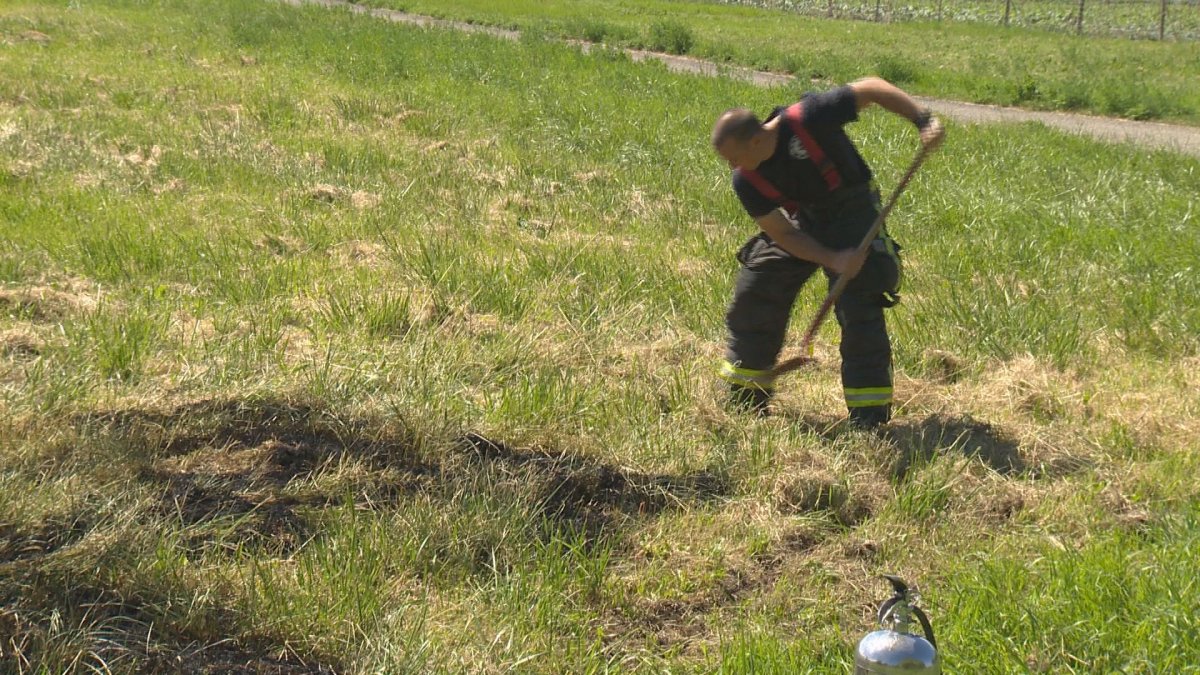Thanks to cool and wet weather this month and last, fire season hasn’t been its normal, destructive self this summer.

However, with hot temperatures now scorching the Okanagan, and sunny days projected for the next two weeks, enjoy the Valley’s smoke-free skies while you can.
“Fire season is here. We’ll see our danger rating accelerate pretty rapidly over the next couple of days,” West Kelowna fire chief Jason Brolund told Global News this week.
Brolund says fire season in the Okanagan starts around the middle of June and ends in the middle of September.
As of today, and according to the B.C. Wildfire Service active fire map, there were three fires in the Kamloops Fire Centre, a large region that also encompasses the Okanagan. One was in Wells Gray Provincial Park, northeast of 100 Mile House, with the other two in the Okanagan.
The first Okanagan fire was a small two-metre by two-metre fire south of Coldstream near Kalamalka Lake that was put out on Wednesday. Called the Cougar Canyon fire, a crew of three doused the human-caused fire.
The second fire is in the south Okanagan, east of Okanagan Falls. Located on Mount Christie and also discovered Wednesday, the fire was measured to be 0.01 hectare in size and is believed to be lightning caused.
That there were only three fires was because of region-wide precipitation earlier this week, along with several bouts of rain throughout June. That, according to the BCWD has dampened surface fuels.
- Life in the forest: How Stanley Park’s longest resident survived a changing landscape
- ‘Love at first sight’: Snow leopard at Toronto Zoo pregnant for 1st time
- Carbon rebate labelling in bank deposits fuelling confusion, minister says
- Buzz kill? Gen Z less interested in coffee than older Canadians, survey shows
But BCWS noted that despite this, there have been more fires to date this year than last year at the same time. It said there have been 124 fires so far compared to 96 fires in 2017.
What makes this fire season seem less damaging, said BCWS, is a massive difference in the amount of land that’s been burned. This season’s to-date total is 3,843 hectares. In 2017, because of two large fires, the to-date total was 7,199 hectares.
Even though there have been more fires, those are sweet numbers for Brolund. Less time fighting fires means more time for training and fire preparedness.
“(Fewer fires) has allowed us to carry on with our training schedule and our fire prevention activities. Kind of all those other things that are going on,” he said. “For fire season, we hit the pause button on projects and that type of thing, and we haven’t had to do that yet.”
If Brolund had his way, the remainder of fire season would be quiet as well. That, though, is highly unlikely, and he’s warning people to stay alert.
“As much as people think ‘Well, I’ve had a fire behind my house already; it won’t happen again.’ Nothing ever burns 100 per cent,” said Brolund.
“So I think another factor, in addition to climate change, is just the fact that we are interacting with that wildland, urban interface so much more now, be it with our homes or when we go out on our mountain bikes, whatever it might be.
“I think this is the new normal. And whether (fire) strikes in West Kelowna or whether it’s somewhere else, I think it’s just kind of the way it’s going to be.”


Comments